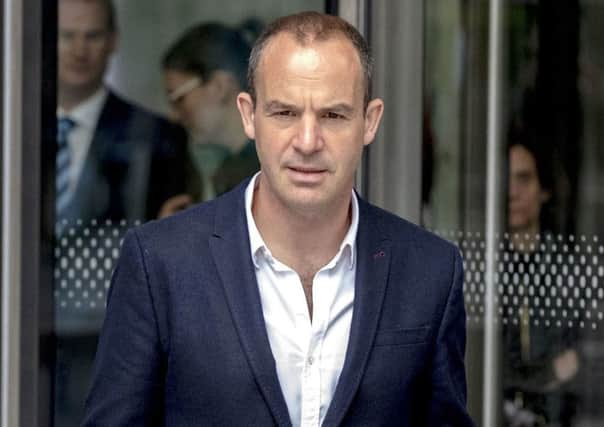Martin Lewis: How to save money and save the planet


Of course, minds aren’t on energy bills as we approach the summer, but this is a crucial time in the cycle. Here’s five key need-to-knows...
The price war is only for switchers. Over recent months, the wholesale price for energy (what the gas and electricity firms themselves pay for it) has plummeted. On the back of that many providers have put out much cheaper deals to try and get customers to switch to them. In fact since January for someone on typical use, the price of the market’s cheapest deal has dropped by over £100/yr so it’s now well under £900.
Advertisement
Hide AdAdvertisement
Hide AdMost people are on the price cap that has gone up. In April, the price cap for 11m people on standard tariffs jumped by an average 10%, a rise of £100 a year for those with typical usage meaning they now pay £1,254/year, and it will remain unmoved until October.
It only takes five minutes to find your cheapest. As your cheapest depends on where you live and how much you use, to find your winner use a comparison site. It only takes five minutes, just plug your details in to my www.moneysavingexpert.com/cheapenergyclub which also gives extra cashback if it can switch you, and by default includes the whole market’s tariffs.
Alternatively www.Ofgem.gov.uk has a list of approved sites. However do remember some of these will automatically hide those that don’t pay them.
Don’t just go for the cheapest provider. This may seem a bit contradictory as I’m saying everyone should switch, but generally the cheapest providers are new firms you won’t have heard of with possibly little financial backing (hence 9 going bust within the last year).
Advertisement
Hide AdAdvertisement
Hide AdSo for ease and safety, it’s best to scroll down a little to find more reliability and still make huge savings. Often you can find good customer service firms for only a percent or two more money, meaning you still save large, but can breathe a little easier.
Less changes than you think when you switch. It’s the same gas, same electricity, same pipes, same safety, only the customer service and the price changes.
Go green too…
The world is changing. Single-use plastics are now often unacceptable, 16-year-old Greta Thunberg recently spoke to Parliament, Extinction Rebellion’s cause (if not method) was widely supported and for the first time since 1882, the UK went a whole week without generating electricity from coal.
In the past opting for renewable energy tariffs was often at a premium, but things have changed. Many of the best mid-sized energy firms have been around for a while, and have some cheap green tariffs as a way to bring in new sections of the market. So one company may have many different tariffs that vary in ‘greenness’.
Advertisement
Hide AdAdvertisement
Hide AdEven if you do go green, the gas and electricity coming into your house won’t be, as that comes from the nationwide network that’s fed from multiple sources. So what do the green options really mean?
100% renewable electricity. While your energy won’t all be green, your supplier will buy enough renewable energy (hydro, solar, wave or wind power that do not deplete the Earth’s resources) to match your use, so the net effect of you using a 100% renewable supplier is as if all your energy was renewable.
100% green gas. This comes in two types. Firstly, there’s renewable gas (from anaerobic digestion). But it’s rare to have even 10% renewable gas, let alone 100%. Like with electricity above, your gas won’t all be green, but your supplier will put the amount you use back into the network as renewable gas.
The other method, carbon offsetting, isn’t actually renewable. Firms simply ‘offset’ the effect of ‘dirty’ gas by paying to plant more trees, which is intended to have the same positive effect as your usage has a negative effect.
Advertisement
Hide AdAdvertisement
Hide AdMost comparisons allow you to simply select only Green tariffs, so you can see a range of them. Bigger names that have good customer service records and some green tariffs include Octopus (100% renewable electricity) and Bulb (100% renewable electricity, 100% green gas – 10% renewable, 90% offset) and both can typically save people over £250/year.
Or if you want to stick with a big 6 firm – British Gas’ Energy Plus Protection Green May 2020 tariff has a fixed rate till May 2020 and on typical usage costs £967/year - a no-brainer if you’re loyal to British Gas or prefer a big name. But it’s only available via comparison sites (like the ones above) - you can’t call British Gas and ask for it.
It has 100% green electricity and 100% offset gas, and most also get 12 months’ ‘free’ central heating, plumbing, drains and home electrical cover, but do note: the insurance auto-renews after a year, even if you switch energy (though you can cancel it any time).
Martin Lewis is the founder and chairman of MoneySavingExpert.com. To join the 13 million people who get his free Money Tips weekly email, go to www.moneysavingexpert.com/latesttip